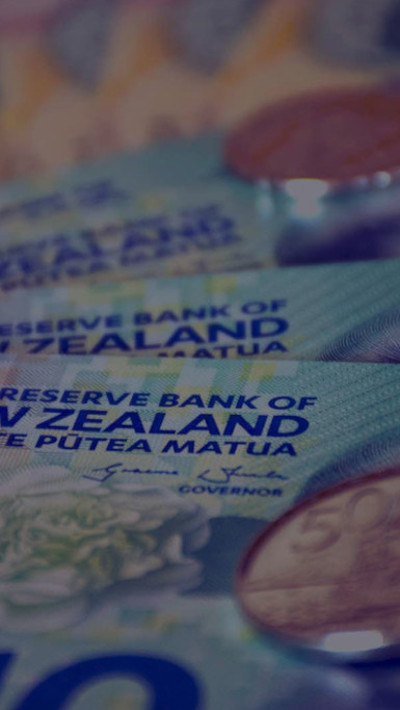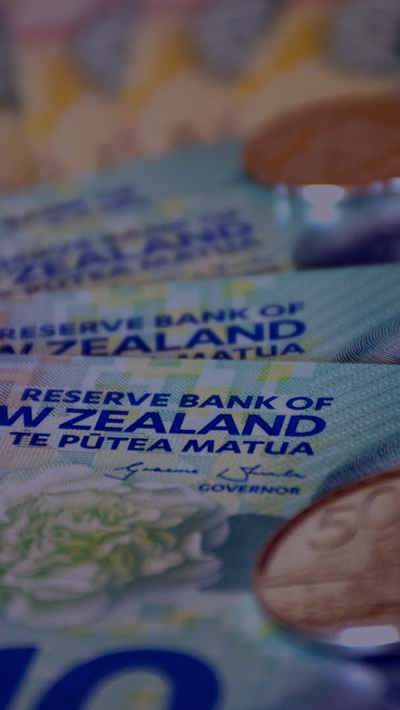Contents
The capital gains tax (CGT) proposed by a majority of the Tax Working Group (TWG), to apply to most assets except the family home, is provoking a huge amount of discussion but already seems destined for the bin.
More likely is that the minority view – a much narrower CGT focused on residential rental properties – will make the running, and even that will not be without political risk or difficulty.
The Government will deliver its response to the TWG report before the end of April. The current ambition is that this will reflect a cross-coalition consensus with New Zealand First sign-up.
So what has the TWG put on the table, and what are the issues and the prospects for success?
CGT recommendations at a glance
We have not attempted to reproduce all of the recommendations relating to the CGT, just the key ones. The rest are set out in the appendix to this document.
Scope
- To apply to land and buildings, New Zealand and Australian shares, business assets and intangible property, including intellectual property and business goodwill.1 The family home and Māori Freehold Land under Te Turi Whenua Māori Act 1993 would be excluded as would personal use items such as cars, boats, artwork, jewellery and collectibles.
- Tax payable generally when the asset is realised or sold, with rollover relief for certain life events – e.g. death and relationship separations, business reorganisations and small business reinvestment.
- To be incorporated within the current income tax system and taxed at the taxpayer’s marginal rate, with no discount or adjustment for inflation.
- Capital losses could be offset against ordinary income, with some important exceptions – e.g. from a holiday house used exclusively by the family. Losses from portfolio investments in listed shares held by non-traders would be ring-fenced so they could only be used to offset capital gains. Losses on assets held on implementation date (“Valuation Day” assets) would also be ring-fenced.
- Financial arrangements and foreign shares would continue to be taxed under existing rules.
- Special rules may be required for KiwiSaver and portfolio investment entities (PIEs). These include recommendations that gains on shares would be taxed on an accruals basis and that a new form of PIE is created for property investments with its own rules.
Boundaries
The TWG’s terms of reference required that the family home be excluded from any CGT. The guiding principle in the design of the CGT to accommodate that requirement is that a person can have only one excluded home, but this raises a number of practical issues for which the TWG has proposed rules.
Scenarios include where:
- it is difficult to identify which of the properties a person owns is the “main” home
- couples have separated and occupy different homes
- a home is jointly owned, including through flat-owning or look-through companies (LTCs)
- homes are held in family trusts
- there is an overlap between when an old home is sold and a new home is acquired or is being constructed, and
- a home is partially used for income-earning purposes – e.g. as an office, where rooms are rented to flatmates and boarders, for Airbnb or as bed and breakfasts.
The TWG also deals with the issue where the land attached to the excluded house exceeds a certain threshold. It proposes that in these cases, the CGT exclusion would be limited to 4,500m2.
Many of these issues require an apportionment approach to be taken in determining the taxable gain. This can include apportionments of value:
- across the physical dimensions of a property (e.g. where a property is partially used as a main home and partially used to earn income), or
- across time (e.g. where a property is used exclusively as a main home sometimes and as an income-earning property other times).
Who to tax
The CGT would apply to:
- New Zealand tax resident individuals and entities in respect of their worldwide assets, including land and buildings in other countries
- non-New Zealand residents in respect of buildings, business assets and land located in New Zealand, including interests in companies that derive more than half of their value (directly or indirectly) from New Zealand land
- partnerships and LTCs, according to members’ proportionate shares, and
- assets held in trusts, although the TWG acknowledges that there will be complexities attached to this and that special anti-avoidance rules may be necessary.
Chapman Tripp comment
The Government has been clear that the TWG report is only the start of the process and that there is a long way to go from here. The first task is for the three parties of government to reach an agreed position. The media focus has been on what it will take to get New Zealand First over the line but Labour will also be assessing the wider political risk in terms of how far it can go without jeopardising the 2020 elections.
These factors are inter-related as, the bigger the concessions made, the greater the damage to the policy rationale Labour is promoting for the CGT – fairness, equity, a broader tax base and more equal tax treatment across different asset classes.
And once the ability to deliver these outcomes is compromised, the (considerable) complexity and compliance costs associated with introducing a comprehensive CGT start to outweigh any perceived benefits.
The level of thought that the TWG has had to devote to how a CGT would interact with reasonably run of the mill corporate group matters such as tax loss offsets and dividends provides an insight into just how complex a broad CGT has to be if it is to operate effectively. A mooted solution of compulsory consolidation brings with it further complexity and compliance costs.
Indeed the TWG advises that introduction would be “a significant endeavour requiring the full attention of the Government” and that implementation within the Government’s stated timeframe (1 April 2021) will be challenging.
Other issues include:
- The widespread need for taxpayers to obtain valuations of assets held on Valuation Day. Businesses will face a particular challenge around what to value (e.g. the business as a whole, separate parts of the business capable of separate operation or individual assets?). In line with the experience in Australia, we see valuation issues as a likely cause of material disputes between taxpayers and Inland Revenue.
- The potential harm to New Zealand equity markets arising from actual or perceived differences in tax outcomes for New Zealand and Australian shares as compared with foreign shares. Australasian shares would generally be subject to CGT while foreign shares would remain subject to the fair dividend rate (FDR), which sees tax paid based on 5 percent of market value of shares. This risks driving a bias in favour of investment in foreign shares, which seems to us a far from ideal outcome from a wider perspective of what is right for New Zealand. Suggested solutions (e.g. reset of the FDR rate from time to time) introduce further complexity and uncertainty in an already complex area and may not address perceptions that drive behaviour.
- Taxing KiwiSaver and PIEs on an accrual basis is a sensible recommendation in light of the systems challenges and investor equity issues that would arise if tax was payable on a realisation basis. However, this could drive a preference for direct investment, which may not be rational in the absence of the different tax treatment.
- It is hard to understand the policy rationale for disallowing losses on private use land (e.g. baches) while taxing gains on those same assets. Similarly, the recommendation that losses on Valuation Day assets be ring-fenced is hard to justify from our perspective.
It is for these reasons that we think the minority’s view will prevail – that is, a careful extension of the existing rules to tax specific assets where there is a need to address current tax biases or inequality, such as residential rental properties.
Other recommendations
Although the CGT has sucked most of the oxygen out of the debate, the TWG has suggested a range of other reforms, which we outline below.
Environmental and ecological outcomes
The TWG recognises that taxation can help transition New Zealand toward a more sustainable, regenerative and circular economy. Its recommendations include:
- reforming the Emissions Trading Scheme (ETS) to provide better information on pricing, expand the coverage to agriculture, and allow emissions to be auctioned to raise revenue
- using tax instruments to address water pollution and water abstraction, and
- expanding the reach and rate of the Waste Disposal Levy.
Over the longer term, it recommends that innovative tax tools, such as a ‘natural capital enhancement tax’, could be used to broaden New Zealand’s tax base.
The taxation of business
Recommendations in this area are to:
- relax the loss continuity rules for start-up firms and to allow a deduction for black hole expenditure, and
- reinstate building depreciation deductions on a partial basis for seismic strengthening and for multi-unit residential or mixed-residential buildings.
KiwiSaver
Recommended changes to encourage low income KiwiSaver members to save are:
- refunding the employer’s superannuation contribution tax (ESCT)
- increasing the member tax credit and/or allowing the maximum payment for KiwiSavers on parental leave, and
- cutting the lower PIE tax rates by 5 percentage points.
Personal income tax
Recommendations include increasing the bottom tax threshold and (potentially) raising the second marginal tax rate.
This would be expensive to implement but would be funded by the revenues from the CGT (presumably assuming the majority’s more expansive model).
Charities
The TWG has recommended that the Government consider whether to apply a distinction between private controlled foundations and other charitable organisations.
Tax system administration
The TWG supports the creation of a taxpayer advocate service to assist with resolving tax disputes and a truncated tax dispute option for small taxpayers.
Where to from here?
As stated above, the Government will be delivering its formal response to the report in April. It hopes by then to have an agreed position that the three parties can take forward.
The idea is to have legislation passed to take into the election campaign with an effective date of 1 April 2021 (meaning that an incoming National-led government could repeal the Act before it came into effect).
Chapman Tripp will monitor developments closely and will produce a detailed analysis of the final reform package, once we know what it is.
Our thanks to Robert Grignon and Edwina Ma for writing this Brief Counsel.
Links:
Appendix
Realisation based regime
The TWG has recommended a realisation based taxing point, which generally means when an asset is sold (whether for cash or in-kind, e.g. a barter transaction). Realisation would also be deemed to occur when a change in use takes the asset out of the GCT net (e.g. a rental property starts to be used as the family home) or when a New Zealand resident migrates to another country.
Rollover treatment
Rollover treatment (where taxation of gains or losses is deferred) is recommended for:
- property transfers as a result of death and relationship separations, although CGT will be exacted when the asset is sold, based on the original party’s cost base
- gifting to spouses or partners (all other gifts would be treated as realisation events triggering tax, with the exception of gifts to donee organisations such as charities, which would be exempt entirely)
- business reorganisations, where there is no change in ownership
- transfers of Māori collectively owned assets
- small business reinvestment (for businesses under a suggested turnover threshold of $5m on average over a five year period), and
- the sale of closely held businesses on retirement.
Valuations
Valuation rules will be important to determine cost base on acquisition and income on the realisation of assets. In a typical purchase and sale context (excluding associated person transactions), the agreed third-party price will be appropriate.
However, there are many instances where the ownership of assets does not change, but the assets are deemed to enter or exit the tax base. These situations include:
- when the rules for taxing capital gains come into force (referred to by the TWG as “Valuation Day”)
- when a person migrates to New Zealand or emigrates from New Zealand, bringing assets with them, and
- when a person changes the use of assets (e.g. when a person starts using their excluded family home as a rental property).
Treatment of losses
The TWG recommends that capital losses should generally not be ring-fenced, and should be available to offset other taxable income (for example, a loss on the sale of an investment property could be used to offset salary income, resulting in a refund of tax paid by the person’s employer through the PAYE system).
Exceptions, where it considers ring-fencing should apply are:
- capital losses from the disposal of assets that can be easily sold and repurchased after crystallising a loss – e.g., portfolio listed shares and derivatives, precious metals and cryptocurrencies
- capital losses from transactions between associated persons
- capital losses where the cost base or deemed sale price of the asset is determined using a valuation method instead of an arm’s-length price (for example, on Valuation Day), and
- capital losses on the sale of private use assets (e.g. land used exclusively for private purposes, such as a family bach).
Withholding taxes
The TWG suggests that additional withholding taxes and third-party information reporting could be introduced to assist with the collection of CGT. Compensating withholding agents for their efforts is not completely off the table.
Taxation of multi-rate PIEs and Listed PIEs
The TWG recommends that Australasian shares held by multi-rate PIEs, including KiwiSaver funds, and listed PIEs be taxed on an accrual basis. This is the same method as the Comparative Value (CV) method under the Foreign Investment Fund (FIF) regime which essentially taxes distributions received and the movement in the value of the shares during the year, less costs.
Property PIE
The TWG recommends the introduction of a ‘Property PIE’ that solely holds real property (and bank accounts). A Property PIE will continue to be either a multi-rate PIE or Listed PIE with the following modifications.
For an investor that holds a direct investment in a multi-rate PIE, two options have been suggested:
- to be treated as owning the underlying real property directly (similar to a partnership). Tax will be payable on sale of the property and paid by the PIE. When an investor exits the PIE, they will be treated as having disposed of their share of the property and tax will be payable by the investor, or
- the PIE to be treated similar to a company and the investor to be taxed on sale or redemption of its investment in the PIE. To prevent double taxation, the cost base of the PIE investment will be increased by income attributed to the investor and reduced by distributions to the investor.
For an investor that holds a direct investment in a Listed PIE, the following would apply:
- the Listed PIE to be treated similar to a company and taxed on any gain from sale of property
- investors to be taxed on imputed dividends and on any gain from sale of their investment in the Listed PIE, and
- unimputed dividends to either be taxable on receipt by the investor or treated as non-taxable and the cost base of their shares in the Listed PIE to be reduced by the distribution.
For an investor that is a managed fund, their investment in a Property PIE (multi-rate PIE or Listed PIE) to be taxed on an accrual basis, the same treatment as Australasian shares. The cost base of their interest will not need to be adjusted and attributed income will not be taxable.
Taxation of corporate groups
The TWG addresses a number of issues that may arise from applying CGT in a corporate group context. Among the TWG’s suggestions are:
- where tax losses are transferred within a corporate group for no consideration, the cost base in the transferring company’s shares to be reduced by the amount of the losses transferred and the cost base in the shares of the company receiving the losses to be increased by the amount of the losses transferred
- the cost base adjustments referred to above to also be reflected “up the chain” to the ultimate parent company, where the companies are part of a chain of parent and subsidiary companies
- the cost base of a subsidiary’s shares to be adjusted down to the extent it pays an unimputed dividend to its parent company where that dividend is exempt income of the parent company. A similar adjustment may also be required where imputed dividends are paid by a subsidiary if the imputation credits utilised are from another member of a consolidated group of which the dividend payer is a member
- annual cost base adjustments to be required for all companies that are part of an income tax consolidated group to address non-taxed transfers of value between group companies, and
- the Government to consider the introduction of compulsory consolidation rules (similar to those in Australia) which may at least partially address the issues raised above.
1References to the TWG’s recommendations in this article are to the majority’s recommendations.














































